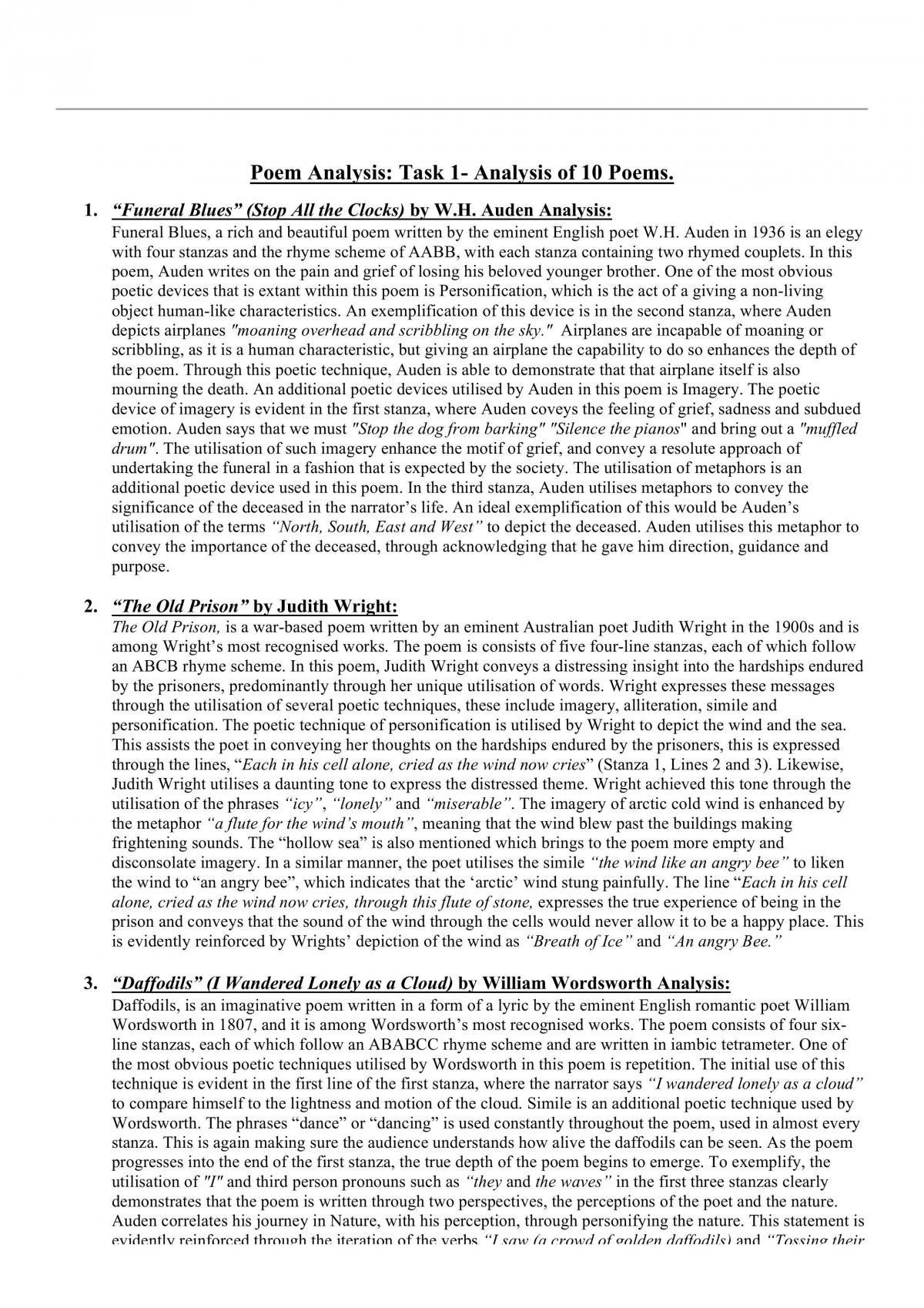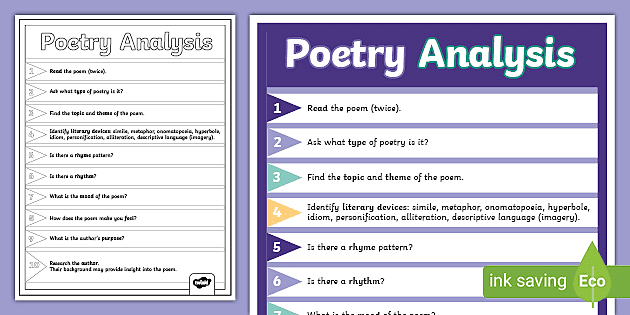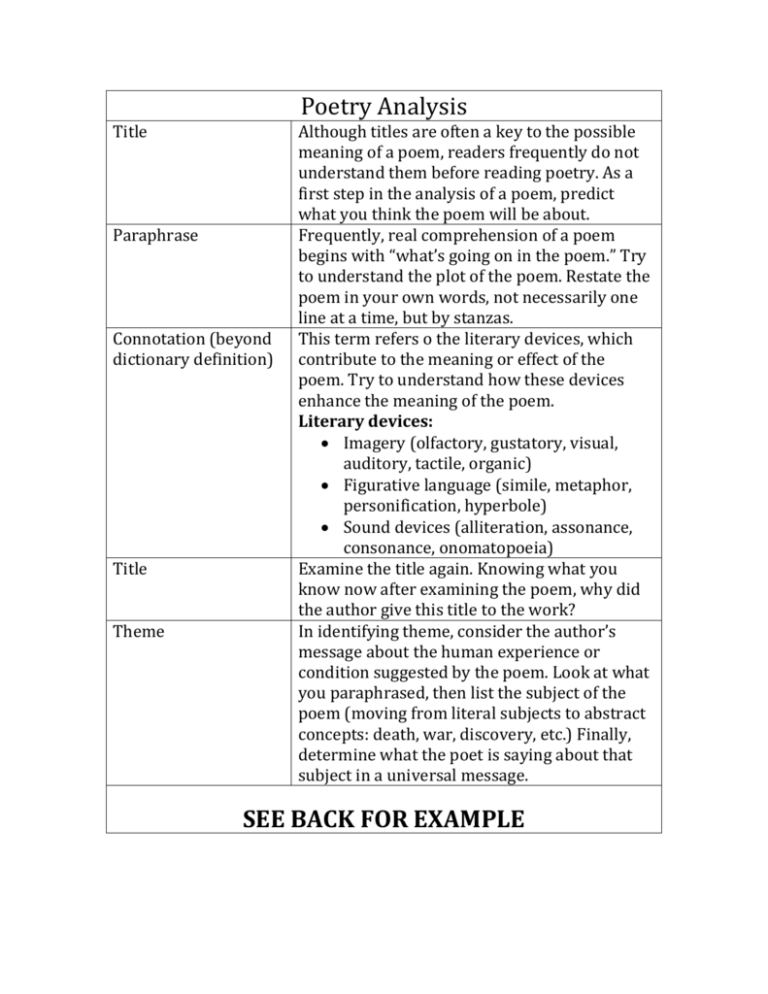Poem analysis is the process of examining a poem in order to understand its meaning, its themes, its structure, and its literary devices. This process can help readers to better appreciate and understand the poem, and can also help writers to create more effective and impactful works of poetry.
To begin a poem analysis, it is important to first read the poem carefully and thoroughly. This may involve reading the poem multiple times and taking notes on your initial impressions and observations. As you read, pay attention to the poem's structure, including its rhyme scheme and meter, as well as any figurative language or literary devices that the poet has used.
Next, consider the theme or main idea of the poem. What is the poet trying to convey? What message or emotion is the poet trying to impart to the reader? Look for clues in the language, imagery, and tone of the poem to help you understand the theme.
Another important aspect of poem analysis is understanding the context in which the poem was written. Consider the historical and cultural context in which the poem was created, as well as the poet's personal experiences and influences. This can help you to gain a deeper understanding of the poem and its themes.
Finally, consider the poetic techniques and devices that the poet has used in the poem. These may include rhyme, meter, imagery, symbolism, and figurative language, among others. Understanding how these techniques are used can help you to appreciate the poet's craft and the impact that the poem has on the reader.
Overall, the process of poem analysis can be a rewarding and enlightening experience, helping readers to better understand and appreciate the beauty and depth of poetry. It can also be a useful tool for writers, allowing them to craft more effective and impactful works of poetry.






